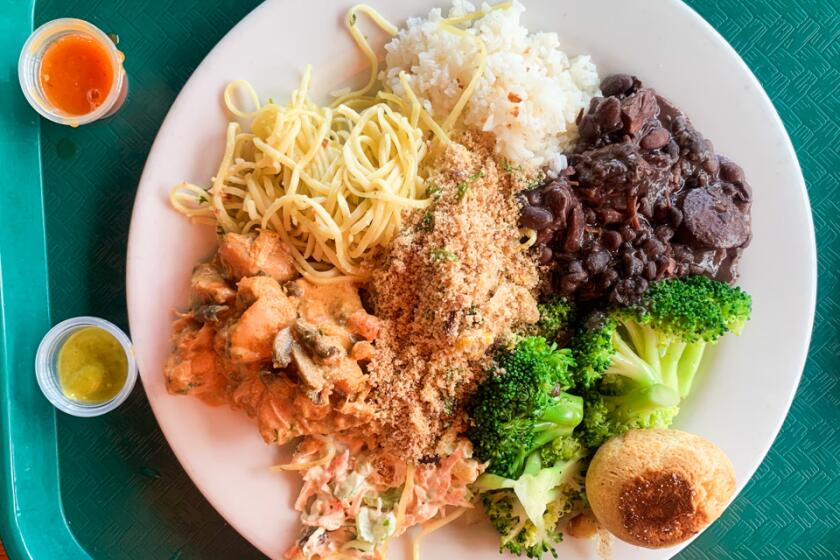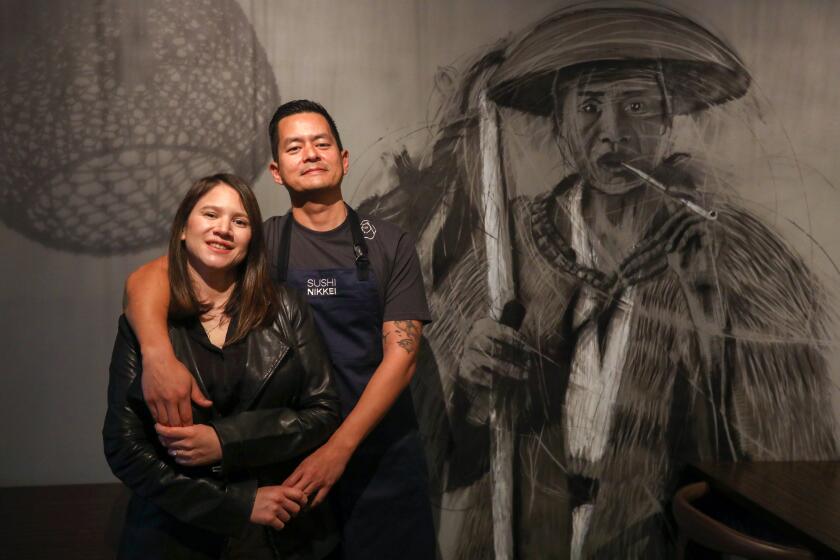How to Make a Better Burgundy : Josh Jensen Finds the Answer in California’s Limestone Soil
In 1970, after graduating from Yale and doing postgraduate work at Oxford, Josh Jensen decided to learn more about one of mankind’s most honored treasures, noble red Burgundy wine. This legendary wine of Pinot Noir grapes came into prominence in 1395 when Philip the Bold ordered Cistercian monks, who cultivated the vineyards of the region and made the wines, to cease and desist from adulterating their vintage with the more prolific, heavier-bearing Gamay. Monastic greed was brought to an abrupt halt with history’s first known viticultural edict, which banned forever from the Cote d’Or this more vulgar variety as “ tres mauvais et tres desloyaux “ (“very bad and very disloyal”).
Since that time, the famous name of Pinot Noir has survived wars, revolutions and secularization of church properties. Clos de Vougeot, a 124-acre vineyard, established by Cistercian monks in the 12th Century, today boasts more than 40 separate plots and even more owners, negociants and shippers. Chambertin and the adjacent Clos de Beze also have divided ownership, as has Domaine de la Romanee-Conti, perhaps the most highly valued vineyard real estate in the world.
The case for Burgundies of Pinot Noir was simply stated in the last century by J. L. W. Thudichum of London: “In the middle ages Burgundy was the standard wine on the tables of the great and mighty of the world, and a glass of Burgundy was the finest drink which anyone could offer to his most honored guest.”
Enter Josh Jensen, curious to discover what had made these wines special through so many years. He went directly to the source, knocking at the gates of La Romanee-Conti in the week before harvest, asking for a job as a picker.
“It was heavy work,” Jensen told me, “filling those large wicker baskets, toting them to the wagons from dawn till dusk. I asked a lot of questions about how they make the wine. They just told me to watch. We pitchforked the grapes into wooden fermenting vats and walked away. ‘They’ll start fermenting in a day or so,’ they said. And they did. That was it. But I wasn’t satisfied. How come these wines were so much better? Obviously, it wasn’t the viniculture. Was it the vine? (There are more than 200 clones of Pinot Noir in the Cote d’Or.) Or was it the soil?”
The French experts consulted by Jensen all agreed that the superiority of fine Burgundies, the oft-repeated “ gout de terroir ,” pointed directly to the substrata of limestone from prehistoric ages. But that was contradicted by further research at UC Davis, which discounted soil and emphasized clonal differences and wine-making techniques.
“I opted to follow the French,” Jensen declared, “and their belief in the importance of the limestone soil. In granitic soils, they say, Pinot Noir produces only a harsh, vulgar wine. But in limestone soils? Aha!”
The rest is history. Jensen spent the next two years looking for limestone acreage in California. At last, near Hollister in San Benito County, he located an old limestone quarry that had supplied a cement factory. The long-abandoned kiln, dug into a hillside, could be converted into a winery, with gravity flow for the must. Nearby acreage could be test-planted.
The first test acre was planted in 1974, with vines budded onto phylloxera-resistant rootstock. Twenty-three additional acres were planted in 1975. Jensen called his winery Calera, which is Spanish for “lime kiln.” Today, Calera has three plots devoted to his Pinot Noir wines; the labels on the bottles are Jensen, Reed and Selleck.
“We just pitchfork the whole clusters into open fermenters,” Jensen told me. “We have a pneumatic ram to punch down the grapes, as an improvement over the human foot. We add no cultured yeasts--depending, as the Burgundians do, on just the native yeasts on the skins of the berries. I call them ‘friendly’ yeasts--not ‘wild.’ The cap is punched down twice daily. After two weeks, the wine is drawn off into barrels, the must is pressed and this extract added, letting it all rest on the grape lees. It’s checked often to guard against sulfurous side effects. After 15 months, the wine is fined with egg whites and bottled. It doesn’t taste remarkable the first year, but then bottle bouquet and breed begin to develop.”
“It used to be,” Jensen remarked at a tasting of his 1982 wines at the Ahwahnee Hotel in Yosemite, “you could slam-dunk tell a French Burgundy from a California Pinot Noir. Not now.”
Recently, New York Times wine columnist Frank Prial subjected a group of tasters to open and blind tastings of French, Oregon and California Pinot Noir wines. With labels visible, the wines were ranked in that order. Then came the blind tasting. Prial recalls that the tasters had agreed that the top wines were not only French but very good French. When the wraps came off, the top wines were Californian.
Jensen’s longtime search for fine Pinot Noir has been successful. His wines have gold medals from many a competition. The Calera 1982 Reed Pinot Noir ($23) won first place in the American Wine Competition of Craig Goldwyn in New York; only 300 cases were made. Limited amounts are still available in top wine shops. There you may also find the Calera 1982 Jensen Pinot Noir ($23), of which 600 cases were made, and perhaps the most splendid of all, the Calera 1982 Selleck Pinot Noir ($25), of which 385 cases were made.
Calera’s current 1983 vintages in release, which are more generally available, have already won their share of medals, too. Jensen also produces a Santa Barbara County Pinot Noir from granitic soil vineyards. It is a lovely, soft, accessible wine, priced at $10.
Christmas is a good time to share some Calera with the wine connoisseurs on your gift list. Let them make comparisons with the venerable French Burgundies. The result will not be a “slam-dunk” nod.
More to Read
Eat your way across L.A.
Get our weekly Tasting Notes newsletter for reviews, news and more.
You may occasionally receive promotional content from the Los Angeles Times.






